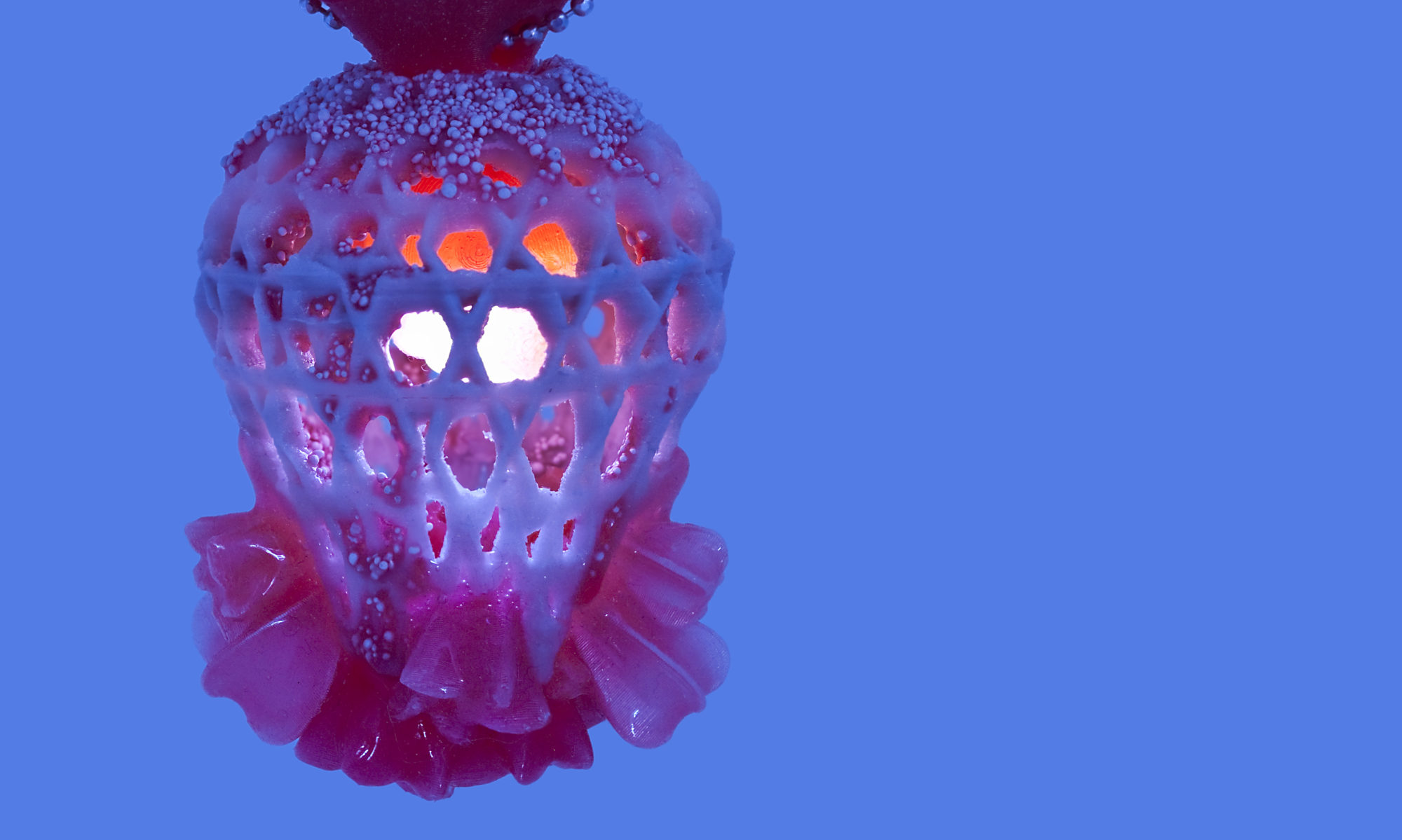A few weeks ago I gave a paper at the XcoaX 2015 conference held at the Centre for Contemporary Arts in Glasgow and this year organised and hosted by the University of the West of Scotland. When I initially saw the call for papers in January, I was intrigued by the eclectic mix of themes, encompassing computation, communication, aesthetics, human computer interaction, coding, digital installation art and the ominous ‘X’. When my paper on the aesthetics of creating stimulus-responsive jewellery was accepted, I was really excited to be a part of this diverse conference and could barely wait for the end of June to roll around.
This year the conference consisted of four different events, including an evening of digital performances and the eponymous ‘Algorave’ held at the GSA, in addition to the more traditional paper presentations and an exhibition of works. After a delightful evening reception on the Wednesday, the paper presentations were held over two consecutive days and consisted of five sessions, loosely linked by themes and content. I thoroughly enjoyed all the presentations, and was particularly intrigued by the amount of research focusing on sound related installations. This was a field I had been unaware of before XcoaX, and the idea of ‘live coding’ performances, where programmers write freestyle lines of code to create sound building blocks which in turn are assembled as electronic music is absolutely fascinating. Other highlights included Hanna Schraffenberger and Edwin van der Heide’s Sonically Tangible Objects which provided the audience with a brief glimpse into a future augmented reality, whereas Nicole Koltik’s short paper on philosophies of the artificial and Sofia Romulado’s analysis of videogames as an artform struck a particular chord with me.
On Friday evening we were treated to a string of performances, and Thor Magnusson and Pete Furniss gave a wonderful demonstration of how live coding and traditional instruments can be used to create a completely immersive ‘wall of sound’ experience in their piece Fermata. Another highlight was provided by digital artist Jung In Jung, who had brought dancers Dane Lukic and Stefanos Dimoulas to perform in their interactive sound and dance collaboration Thermospheric Station.
Altogether it was an amazing experience, and one I am hoping to repeat next year when the conference will be held in Bergamot. Better come up with some fresh material by then! I will finish this brief report with images from the exhibition. While all of the works on show were absolutely fascinating (and I finally got to try some real VR goggles!), two in particular struck a chord – Andreas Zingerle and Linda Kronman’s 5-channel interactive audio installation called ‘Let’s talk business’, a humorous installation exploring online scam narratives and Raul Pinto, Paul Atkinson, Joaquim Vieira and Miguel Carvalhais’ growth objects, which use mushroom spawn to create objects based on biological generative systems. See you next year in Bergamot!



